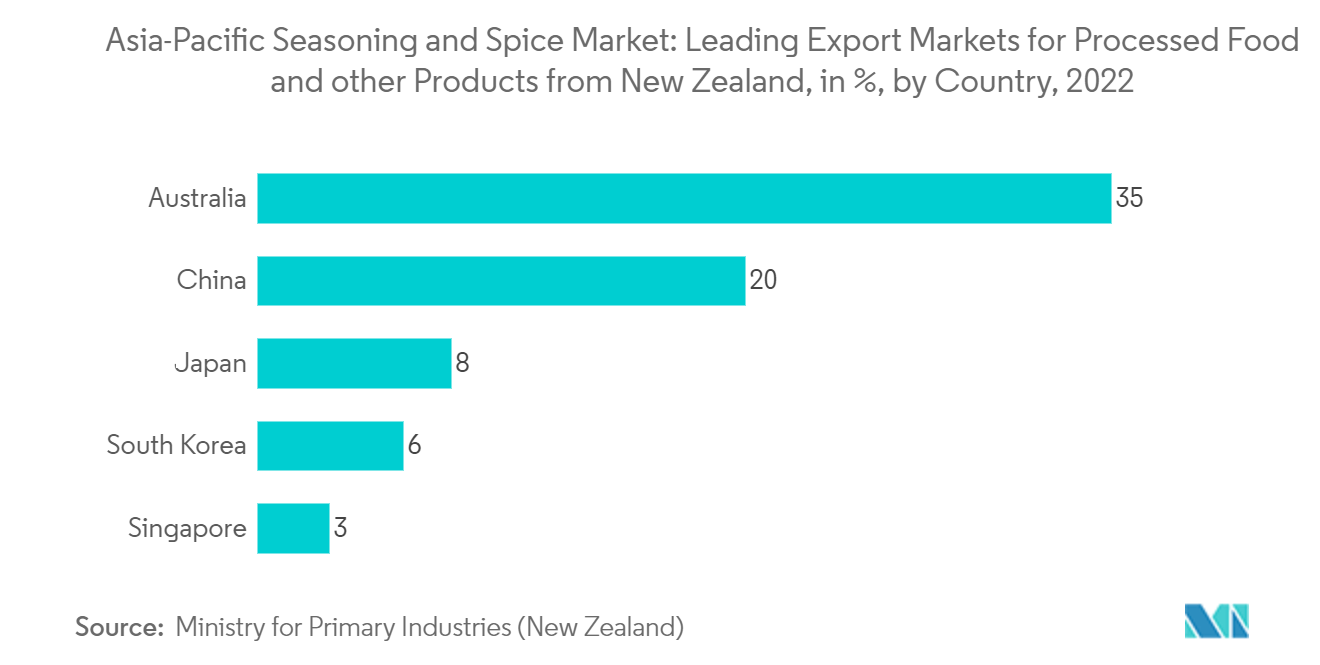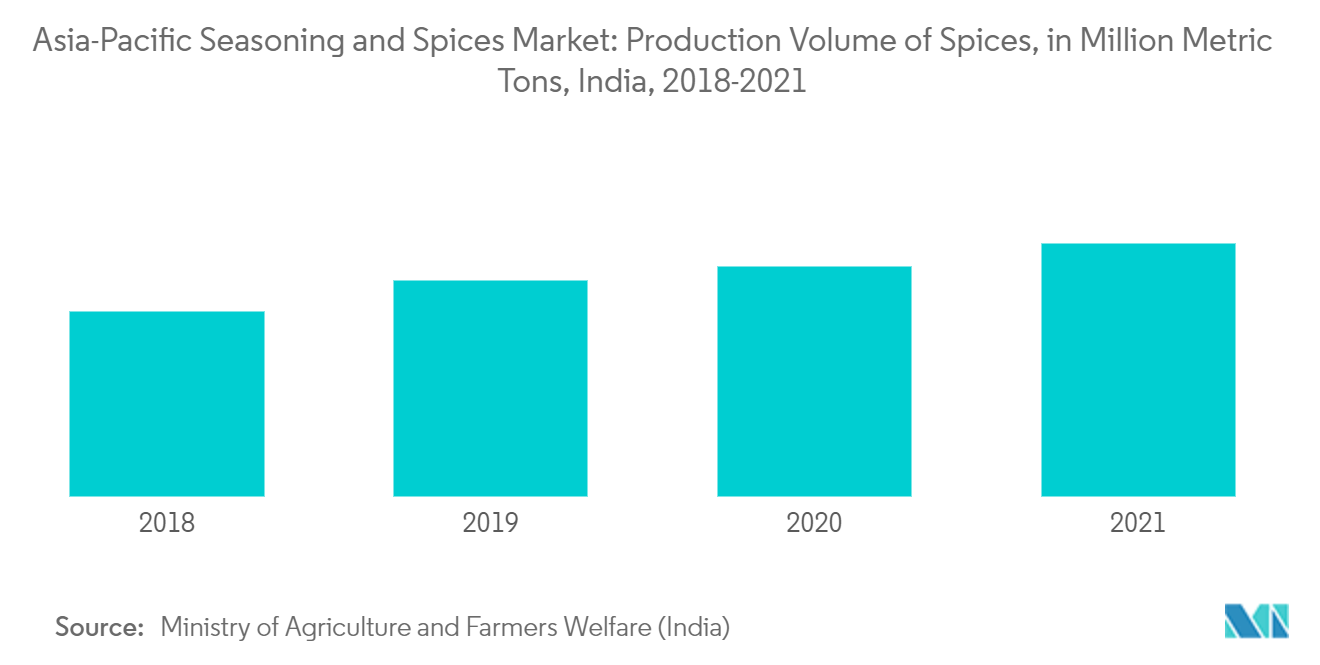Market Trends of Asia-Pacific Seasoning and Spices Industry
Surging Demand for Processed Food Products
The growth of the processed food industry is fueling an increase in the Asia-Pacific market for spices and seasonings. There has been an increase in consumer spending owing to changing lifestyles, an increasing population of working women, increased product offerings, and penetration of retail channels on savory snacks, soups, noodles, beverages, and ready-to-eat food, particularly in China, India, and Japan. Consequently, sectors such as sauces, salads & dressings are buying more spices, which in turn, driving the market growth significantly. According to the Ministry of International Trade and Industry, In 2021, the retail value of processed foods sold at convenience stores in Japan amounted to around 3.07 trillion Japanese yen.
With western foods becoming increasingly accessible and mainstream, consumers are developing an appetite for new and exciting spices and seasonings. Moreover, increasing awareness about harmful ingredients and additives in processed food pushes consumers toward organic spices. Reasons for this increase in western cuisine include the growing multicultural population and the fact that people travel more and more to exotic destinations. As a result, the demand for spices, herbs, and seasonings used in exotic cuisine is also growing. This growing demand for western food in Asia-Pacific has led to significant growth in Asian region imports of spices, herbs, and seasonings from developing countries, boosting the growth of western cuisines in the region.

India Holds a Prominent Share in The Market
The major driving factor of India's spices and seasonings market is the growing middle-class population, increasing awareness amongst end-users regarding health, and increased usage of spices as natural preservatives. India is one of the major exporters and consumers of spices globally, with a market share of 46% by the Spice Board of India, thereby commanding a dominating position in the world spice trade. This region produces about 75 of the 109 varieties listed by the International Organization for Standardization (ISO). Spices in India are grown in small landholdings, with organic farming gaining prominence. It exports a large number of spices across the globe. Most of the demand is observed from countries such as the United States, China, Vietnam, the United Arab Emirates, Indonesia, Malaysia, the United Kingdom, Sri Lanka, and Germany.


